#933 Stanley Park trees
Legacy of Trees: Purposeful Wandering in Vancouver’s Stanley Park
by Nina Shoroplova
Victoria: Heritage House, 2020
$29.95 / 9781772033038
Reviewed by David Tracey
*
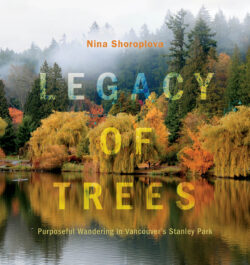 Consider the following thought experiment: the first alien space crew has just landed on Earth (mark your 2020 bingo card). They must quickly discover what our planet is all about. So who do they approach?
Consider the following thought experiment: the first alien space crew has just landed on Earth (mark your 2020 bingo card). They must quickly discover what our planet is all about. So who do they approach?
If your answer was a political leader or scientist or philosopher or any other human, shame on you with your anthropocentric blinders.
Trees have stewarded the planet for more than 370 million years. They were here, cranking out oxygen, long before the dinosaurs and they may be here long after our human experiment goes up in floods and flames. We are alive today because of photosynthesis, that miracle by which solar energy gets converted into food by plants, and trees are the royalty of the plant world.
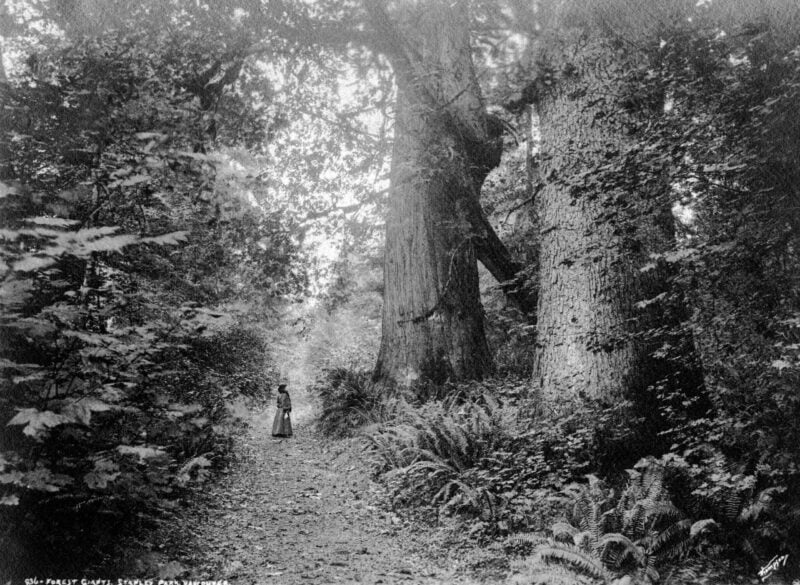
Trees tell a story for anyone with enough patience and appreciation to listen. You don’t have to be a tree geek to see them as the most interesting, venerable, noble, and beautiful organisms on Earth, although it probably helps. What also helps are books by writers who devote the time and effort to express our widely-shared but rarely articulated reverence for the quiet giants amongst us.
Legacy of Trees can be seen as a work of gratitude by Nina Shoroplova for how the trees in Stanley Park have enriched her visits. “I live next to Stanley Park, one of the world’s most beloved and best parks,” she writes in the introduction. “How have I not noticed?”
To gain awareness she decides to wander the park “purposefully.” Her choice of guides is astute. She focuses on trees.
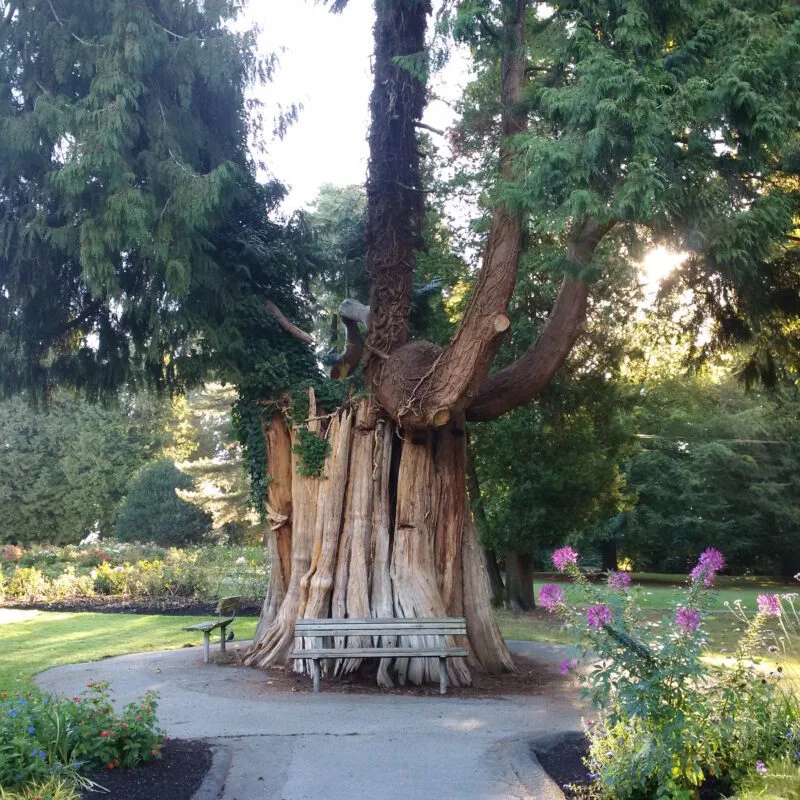
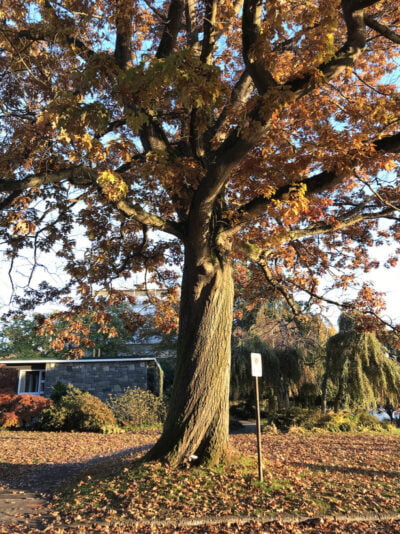
Trees tell a story no matter where they are. In an urban forest the story becomes a novel you can’t put down. For a city like Vancouver, with ideal growing conditions capable of nurturing the largest specimens on the planet, the urban forest is a particularly rich source of material. Stanley Park, its green heart, is a worthy site to observe and report on trees and people and our history together.
As with any story, the characters invariably reflect something of the author’s own life. We learn that Welsh-born Shoroplova first visited the park in 1961, now lives in the West End, and has harboured a life-long affinity for trees. She admits to not having a botanical or arboricultural background, but who cares when there are plenty of other books for those who need to know the science behind each species. Instead she uses her own fascination, along with a talent for research particularly on the history of Stanley Park as written by the Europeans who gave it the name, cut down all but a few of the most spectacular trees, and expelled the First Nations who had always known it as home.
There is a tragic story still unfolding about Stanley Park that takes in both trees and people. If our alien survey crew found a way to communicate with the park’s featured hosts (and we’re only now discovering how trees talk to each other through an underground network of mycelium sometimes called the wood wide web) they would surely hear a lament. The present Vancouver Park Board may be commended for recognizing a growing public interest in understanding and acting on the Indigenous history of Stanley Park, an effort still in its early stages. No doubt a book such as this written a decade from now will have much more material to call on as more understanding of the true history makes its way into print and online.

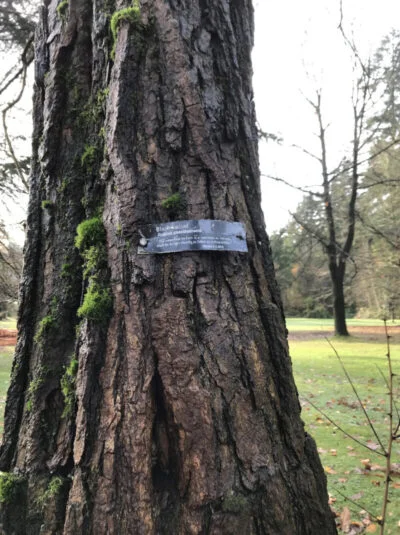
At present we still have the colonial past, which will intrigue those curious to learn why we have the Stanley Park we do today. Shoroplova unearths an ample supply of rich anecdotes about the top-hatted gentlemen of days past and their curious decisions to do such things as import squirrels and plant trees for various blue bloods whose visits were to be celebrated. Buffs of Vancouver history will find plenty here to conjure up the past. I learned about a conversation in 1941 with city archivist Major Matthews that described an “old gentleman” who took it upon himself to plant each year for three years ten pounds of acorns about the park — perhaps the first recorded case of guerrilla gardening in Vancouver.
Some of the historic photos are no less than astonishing, namely for the size of the trees that once towered over the city. A 1901 black and white misty view of a bug-sized Victorian woman “dwarfed by the massive rainforest trees” could have come from a sci-fi movie set. Also impressive are the many contemporary colour photographs taken by Shoroplova herself. It is no small task to try to capture the grandeur of trees in 2D but Shoroplova has applied herself well to the challenge.
The book’s size and heft may put it beyond pocket range but it should fit into a daypack, inspiring readers to follow the maps of various sites with named and numbered trees for purposeful wandering of their own. Stanley Park is visited each (pre-pandemic) year by some 8 million people. Many will have little understanding of the living spectacles that make their visit special but, like non-experts in an art gallery, they know what they like. This book can add to their experience; they might become more aware too.
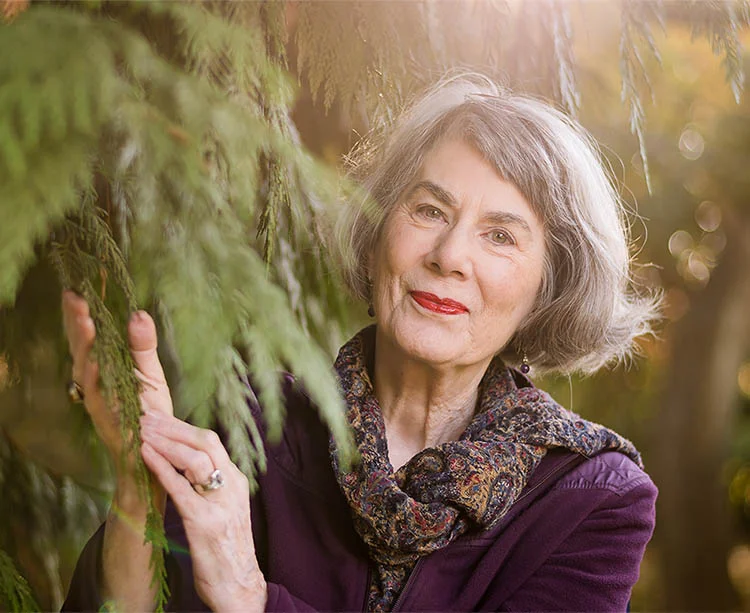
*

David Tracey is a writer, designer and community ecologist living in Vancouver. A certified arborist since 2004, his Tree City non-profit group launched the TreeKeepers campaign that helped Vancouver residents plant over 9,000 trees while training neighbours to become Citizen Foresters. He is the author of six books including the novel The Mustard Seed, Guerrilla Gardening: A Manualfesto, and the #1 BC Bestseller, Vancouver Tree Book (Pure Wave Media, 2016). He currently manages and teaches in the Indigenous Land Stewardship certificate program at Native Education College, Vancouver. David Tracey can be reached at ecourbanist@gmail.com
*
The Ormsby Review. More Books. More Reviews. More Often.
Publisher and Editor: Richard Mackie
The Ormsby Review is a journal service for in-depth coverage of B.C. books and authors. The Advisory Board consists of Jean Barman, Robin Fisher, Cole Harris, Wade Davis, Hugh Johnston, Patricia Roy, David Stouck, and Graeme Wynn. Scholarly Patron: SFU Graduate Liberal Studies. Honorary Patron: Yosef Wosk. Provincial Government Patron since September 2018: Creative BC
“Only connect.” – E.M. Forster








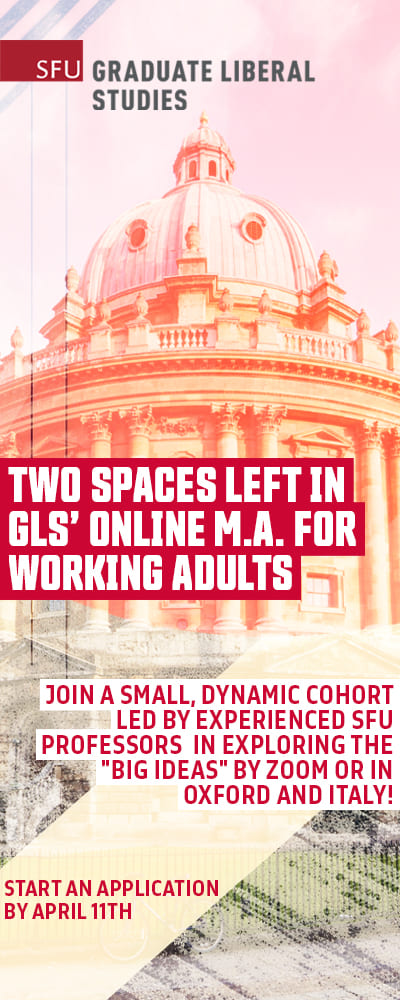






















2 comments on “#933 Stanley Park trees”
Thank you, David Tracey, for this in-depth review of “Legacy of Trees.”
I particularly appreciate what you say here: “Trees have stewarded the planet for more than 370 million years. They were here, cranking out oxygen, long before the dinosaurs and they may be here long after our human experiment goes up in floods and flames. We are alive today because of photosynthesis, that miracle by which solar energy gets converted into food by plants, and trees are the royalty of the plant world.”
And yet there is such a tendency for us to be unaware of them.
Observing the trees, Nina